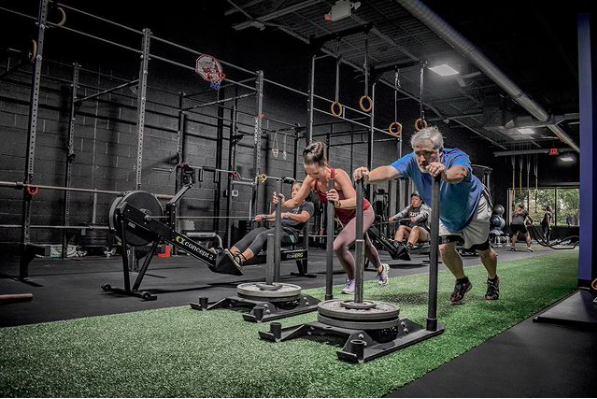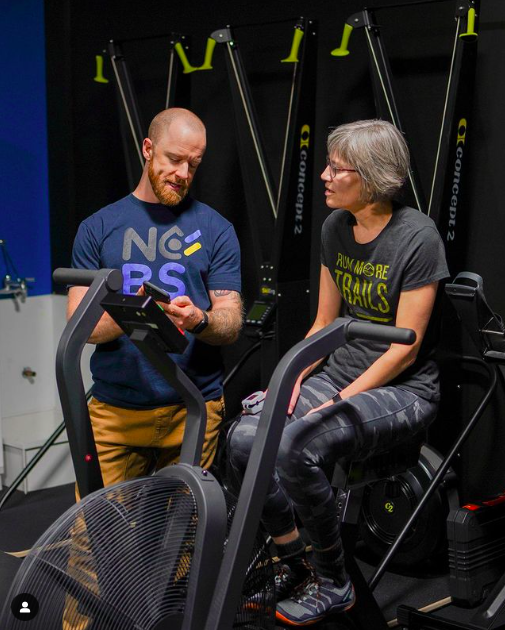Guest Post By Chris Merritt
Do you know who you’re for? What your ideal clients want?
“I can train anyone!”, you say?
Well, I hate to be the bearer of bad news, but if your training business is for everyone, it’s for no one it’s incredibly inefficient to run and it will be almost impossible to scale. On the flip, when you identify your ideal subset of clients, you can create a business that’s a dream for them. And you.
You’ll know who you’re speaking to when you market—their desires, their challenges, their questions, their unique pain points. You’ll know the ideal place to open up shop. You’ll know exactly what equipment you need to train them—and, just as important, what you don’t need.
While I could write a book on how every aspect of your business will be better once you figure this out, today we’re going to dive into how to set up your initial consultation and program delivery for your ideal subset of clients.
Take the time to implement the three steps that follow, and you’ll be able to seamlessly onboard ideal clients and deliver highly effective training programs faster than you ever dreamed possible.
How do I know?
Because we completely scrapped our business model—semi-private personal training for people that wanted to look, move, and feel amazing, without banging up their bodies, even when they’d already tried other gyms, trainers, and diet programs to no avail—that we’d been running for nine years and five months, as of March of 2021. After all, we lost sight of who we were for, and that description was just our catch-all statement that could have just as easily said, “We train anyone and everyone over 30”.
Today we run a high-energy, custom-tailored, class-based, group training model for people that would do CrossFit, but know better want to build a body that’s ready for anything. If you look at our website (www.itsbeyondstrength.com), you’ll see that we don’t speak about fat loss, prehab, sports performance, … Rather, we urge them to stop worrying if they can do it (it being whatever physical thing they’re concerned their body would currently hold them back from doing) and experience more.
Since making this change, we’ve streamlined every aspect of our business, designed a new space that looks (and is) the part, and focus entirely on improving strength, endurance, and mobility for folks that want to live a kickass life. Oh, and we’ve had record growth and profitability, even with all the chaos that 2021 dropped on the fitness industry.

STEP ONE: Write complete program templates with your ideal client(s) in mind
Imagine if you had your ideal prospective client’s program ready to go before they even stepped foot in your facility.
“I don’t know, Chris. That sounds like a one-size-fits-all program, and my clients deserve better than that.”
Okay, I hear you. So, I’ve got to ask. Do you completely make up a novel idea of a fitness program every time you meet with a client?
(I sure hope not)
You likely have a structure that you follow.
On a “strength” day, maybe you open with an appropriate power movement, followed by a core movement that addresses positions they need to work on owning, and then a mobility movement that’s based on their unique hip and/or shoulder mobility needs.
After that, you hit your main compound strength movements for the day—something like a loaded hinge, a pressing variation, and a motor control drill you identified as beneficial at their intake.
Finally, you finish off the session with some auxiliary strength—like a split squat variation and some type of row—to round out a full-body session.
Even if your flow is different, hopefully you’re picking up what I’m putting down.
Individualized program design is simply starting your clients on a training plan that meets them where they are, gives them exercises that put them in the best position to be successful (i.e., putting your progression/regression system to work), and advances them towards their goals.
If we can agree on that much, don’t just imagine having a program ready before your ideal client steps foot in the door. Start building out your templates.
Here’s how that might look on a “strength” day at Beyond Strength:
I’m sure you noticed all of the choices on the provided example and you’re probably wondering how we know what to give them, which brings us to step two…
STEP TWO: Develop a highly effective initial consultation that will provide certainty of where to start your ideal client in the pursuit of their goals
I am going to assume that you’re taking the time to understand their goals, what they’ve already tried to accomplish said goals, that you’re discussing potential roadblocks to their success, talking over their lifestyle outside of the gym, going over their medical, health, and injury history, … okay—I need to pause and catch my breath.
[If you’re interested, you can see how we even capture all of this data and more before they arrive for their consultation here. Just PLEASE don’t fill it out.]
Let’s skip ahead to the part where you hit the gym floor and assess them. Keeping in mind that this is a blog, not a book, I’m going to speak in generalities here. But I’ll get specific where it matters with some examples.
The purpose of EVERYTHING we do in this session is to help our ideal client hit the ground running with their training. So rather than get hung up on what the latest and greatest assessments are out there, think about what YOU need to understand to put this person in the best position to be successful. Similarly, what does your ideal client need to understand?
Here are some of the questions we seek to answer:
With the answers to these questions in hand, we move along to step three…

STEP THREE: Custom tailor the appropriate program template to your client
While it says “pick one for [the] month” after each category on our program example above, the competency to do that takes time. So, we highlight the exact movement that puts our new client in the best position to be successful with their training, based on the results of the above testing. Yes, before they leave this first visit.
Then, when they’re ready—which takes roughly twelve weeks or less at Beyond Strength if all goes to plan—we have them make their own choices for each new program.
Don’t get hung up on the movement options, the act of highlighting, and eventually providing your clients the level of earned autonomy we do though. For you, maybe that looks like deleting away all other options and handing your client a custom-tailored training program made just for them. However, I’ll argue that showing your ideal client that there are levels to this will get them curious about how to graduate to higher-level movements. And now, friends, we have someone excited about the training process, and that’s a very good thing.
Take Action
I’ll ask again… Who are you for? What do your ideal clients want?
And I’ll say it one more time… Take the time to implement the three steps above, and you’ll be able to seamlessly onboard ideal clients and deliver highly effective training programs faster than you ever dreamed possible.
I hope to see you at our Live event on February 19th & 20th in Niles, IL.
CFSC and StrengthFaction are teaming up for another education packed weekend on February 19th & 20th, 2022
at Flahive’s Strength Training in Niles, Illinois.
⠀
The team at StrengthFaction will be rolling out their Program Design University live workshop on Saturday, February 19th. Learn their programming systems that will help you save time time and write more effective programs no matter what population you work with.
⠀
Our CFSC team will be holding a Level 1 course the following day on Sunday, February 20th. At CFSC we teach the complete coaching system used at Mike Boyle Strength & Conditioning that has made it a world leader in sports performance and personal training.
⠀
We’re offering a special combo discount for coaches who sign-up for BOTH courses. Use the promo code “CFSCSTRENGTHFACTION2022” at checkout to save $150 on CFSC and $50 on Program Design University. You must register for BOTH courses separately for the combo discount to be valid.
⠀
Program Design University Live:
https://programdesignuniversitylive.com/landing-page
⠀
CFSC:
https://cfsc.inspire360.com/workshops
⠀
Hope to see you there!